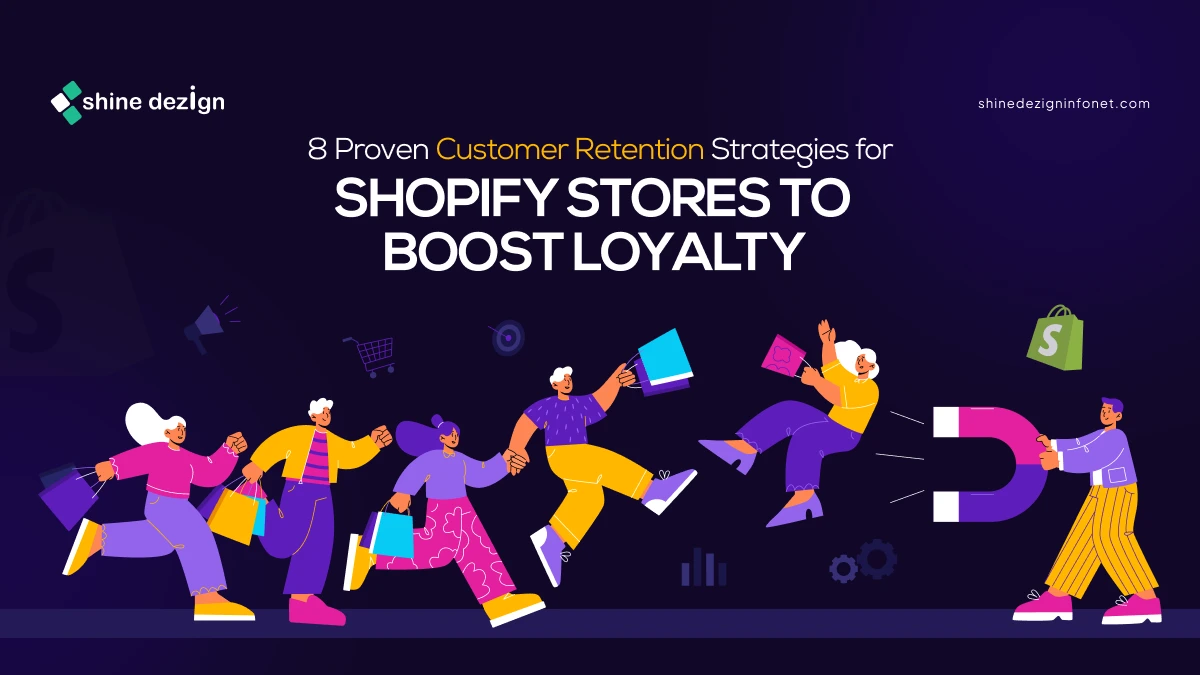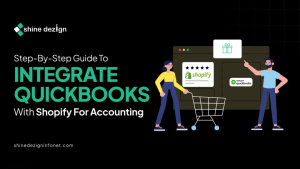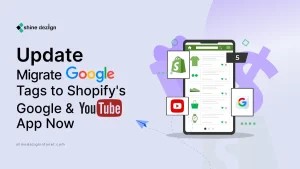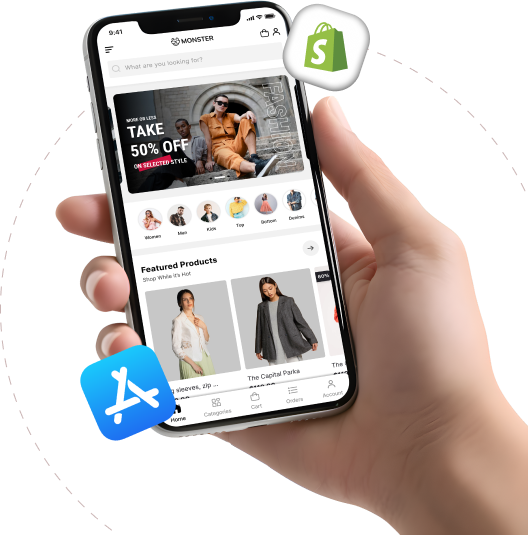Table of Contents
For ensuring the success of your e-commerce store, attracting new customers is important, but keeping your existing customers is even more valuable. Shopify customer retention is the key to sustainable business growth.
For Shopify store owners, focusing on retaining customers can lead to increased revenue, improved brand loyalty, and a higher customer lifetime value (CLV). In this blog, we will tell you what customer retention is, why it matters for your store, how to measure it, and 8 proven strategies to keep your customers coming back.
What does Customer Retention Mean?
 Customer retention refers to the ability of a business to keep its existing customers over time. Rather than constantly trying to acquire new customers, retention focuses on building lasting relationships with people who have already made a purchase.
Customer retention refers to the ability of a business to keep its existing customers over time. Rather than constantly trying to acquire new customers, retention focuses on building lasting relationships with people who have already made a purchase.
Loyal customers are more likely to buying again, recommending your store to others, and leaving positive reviews.
In the context of Shopify, customer retention involves strategies to encourage shoppers to return to your store and make repeat purchases. This can be achieved through personalized experiences, reward systems, and excellent customer service.
Why is Customer Retention Important for Ecommerce Stores?
 Customer retention plays a significant role in the long-term success of any e-commerce business. It goes beyond simply increasing the sales. It is about building a foundation of loyal customers who repeatedly choose your store over competitors.
Customer retention plays a significant role in the long-term success of any e-commerce business. It goes beyond simply increasing the sales. It is about building a foundation of loyal customers who repeatedly choose your store over competitors.
Cost Less:
Getting new customers can be expensive. You need to spend money on marketing campaigns, ads, and special promotions to convince people to visit your store and make their first purchase.
Once a customer makes a purchase, though, you have already invested in building trust with them, so it is much cheaper to keep them coming back.
For example, if you already have a happy customer, they are more likely to buy again. You don’t need to convince them as much because they have already had a positive experience with your store. This makes customer retention a cost-effective strategy.
Increase in Store’s Revenue:
When customers come back to your store, they often spend more money than they did the first time. This is because once someone is familiar with your products, they are more likely to trust your brand and make repeat purchases.
They might also buy more expensive items or add more products to their cart because they know your store and feel confident about their purchases.
For example, a customer bought a pair of shoes from your store. After being satisfied with the quality, they may return to buy a matching bag or additional accessories. Over time, they will keep returning to buy more, increasing your store’s revenue.
Increase in Customer Lifetime Value(CLV):
Customer Lifetime Value (CLV) refers to the total amount of money a customer is expected to spend on your store throughout their relationship with your brand.
When you focus on customer retention, you can significantly increase your CLV because loyal customers will make more purchases over time. The higher your CLV, the more profit your business makes from each customer.
This also means your business can become more stable because you can predict how much revenue you are going to earn from your existing customers. With a strong base of loyal customers, you don’t need to worry as much about constantly finding new ones.
Brand Promotion:
Loyal customers are much more likely to recommend your store to their friends and family. They may also share your store on social media or leave positive reviews, which can influence new customers to give your store a try.
These loyal customers are essentially free promoters for your business. The best part is that referred customers tend to trust the recommendations of friends or family members, so they are more likely to make a purchase from you.
For example, you have a customer who loves your products and shares a post about them on Instagram. Their followers see it, check out your store, and end up making a purchase. This referral-driven marketing can significantly help you bring in new customers, without spending any extra money on advertising.
Long Term Relationship with Customers:
Long-term relationships with customers create trust and emotional connections. When customers feel valued and appreciated, they are more likely to return to your store.
These relationships also give you valuable insights into what your customers want and need. You can learn about their preferences and offer them products that match their interests. Personalized experiences make your customers feel special, which strengthens their loyalty to your brand.
For example, a customer might have bought a product from your store, and based on their purchase history, you can send them personalized emails or special offers that match their interests. This shows the customer that you care about their preferences and increases the chances of them shopping with you again.
How to Calculate Customer Retention Rate?
Calculating customer retention rate means comparing the percentage of increase & decrease in loyal customers over a particular period. The formula of calculating shopify customer retention rate is: –
Customer Retention Rate = [(Number of customers at the end of the period − Number of new customers) / Number of customers at the start] × 100
In simpler terms,
- Number of customers at the end of the period: E
- Number of new customers: N
- Number of customers at the start: S
So, the formula is:
(E – N) / S × 100
For example, if you had 500 customers at the start of the month, got 100 new customers, and ended with 450 customers, your retention rate would be:
(450 – 100) / 500 × 100 = 70%
A higher retention rate means your store is doing well at keeping customers, while a lower rate shows you need to improve.
What are the 8 Proven Strategies to Boost Customer Retention Rate for Shopify Store?
 Boosting your shopify customer retention rate for your store is much more cost-effective to retain current customers than to constantly attract new ones. Here are some strategies to help increase your shopify retention rate:
Boosting your shopify customer retention rate for your store is much more cost-effective to retain current customers than to constantly attract new ones. Here are some strategies to help increase your shopify retention rate:
1. Personalized Customer Experience:
Customers appreciate it when stores suggest products they will actually want. On Shopify, you can set up personalized product recommendations based on what customers bought before or what they have browsed.
This can make their shopping experience feel tailored just for them. Use tools like Shopify Email to send personalized emails to your customers. If they bought a pair of shoes.
For example, you could send an email with recommendations for matching socks, or even a special discount on a second pair. It makes the experience feel more individual and thoughtful.
2. Launching a Loyalty Program:
Create a system where customers earn points for every purchase they make, when referring to friends, or even when writing product reviews. These points can then be redeemed for discounts or free products.
This keeps them coming back to gain more points. Shopify apps like Smile.io make it super easy to set up loyalty programs. Give customers who buy regularly special perks.
For example, offer them “VIP” early access to new products, free shipping, or exclusive discounts. Make them feel appreciated for coming back.
3. Providing Customer Support and a Friendly Environment:
When customers have questions, they want fast and helpful responses. Implement a live chat feature.
These features allow you to answer customer questions instantly, increasing the chances they will return because they feel cared for.
After a customer makes a purchase, send a follow-up email asking if they are happy with their product and if they need help with anything. This shows that you care about their experience beyond just the sale.
4. Making Your Store Mobile Friendly:
Mostly people shop from their phones. Make sure your Shopify store is mobile-responsive so that customers can have a smooth experience shopping on their phones.
If your site is hard to navigate or slow on mobile, you might lose potential return customers. Keep the checkout process simple and quick on mobile devices. The easier it is to purchase, the more likely a customer is to complete their order.
5. Engage Customers with Social Media:
Customers trust the opinions of other buyers. Make sure your product pages display customer reviews and ratings. You can ask customers to leave reviews after they make a purchase.
Encourage your customers to share photos or videos of them using your products on social media. You can repost these images on your store’s social media or website, showing real-life customers enjoying your products.
It builds trust and shows potential customers that others are happy with their purchase.
6. Stay in Touch with Regular Updates:
Stay in touch with your customers by sending them regular newsletters. These don’t have to be just about sales but rather share helpful tips, new product launches, or behind-the-scenes insights.
It’s about keeping the relationship warm and engaging. Stay active on social media platforms. Respond to comments, share customer stories, and give sneak peeks of new products.
Social media is a great way to build a community around your store, and it gives your customers a reason to keep coming back.
8. Build a Sense of Community:
Create a space where your customers can interact with each other and your brand to foster the sense of community. You can do this by starting a Facebook group or even hosting live Q&A sessions about your products or industry.
It helps customers feel they are part of something bigger, which can increase loyalty. Show that you care about your customers by featuring them on your website or social media.
Summing Up
Customer retention is an important tool for the success of any Shopify store. By implementing these shopify customer retention strategies, Shopify store owners can ensure strong customer relationships, increase customer lifetime value, and achieve sustainable business growth.
By providing exceptional customer service, personalized experience, and a user-friendly shopping experience, Shopify stores can keep their customers coming back for more.

















